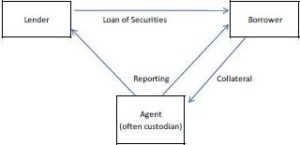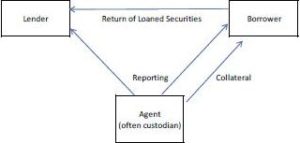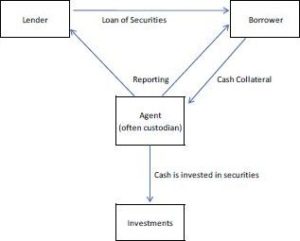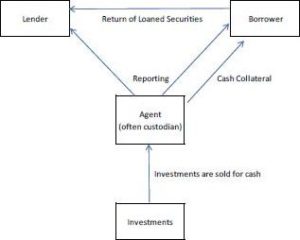In 2008, the GIPS Guidance Statement on Error Correction (the Guidance Statement) was adopted. The effective date of this guidance statement is January 1, 2010. We have summarized some of the key points of the Guidance Statement below and have provided additional implementation considerations. Please feel free to contact us with any questions on the Guidance Statement and how it might impact your firm.
Background of the Error Correction Guidance Statement
The Guidance Statement defines an error as a component of a compliant presentation that is missing or inaccurate. Although everyone prefers that mistakes not be made, the volume of data involved in calculating and reporting composite performance lends itself to the potential for errors. Errors are not limited to returns, but include all numbers in a performance presentation as well as related disclosures, including the potential omission of a disclosure. The fundamental principles of the GIPS Standards are fair representation and full disclosure. As such, a reasonable error correction policy is needed to provide guidance on what steps to take when an error is identified.
GIPS provision 0.A.6 requires that firms document, in writing, their policies and procedures used in establishing and maintaining compliance with all the applicable requirements of the GIPS Standards. This requires that firms have written error correction policies and procedures.
Error Correction Requirements
The Guidance Statement establishes the following requirements for error correction:
1. Error correction policies and procedures must be established and then implemented consistently.
2. Materiality must be defined in the error correction policies.
3. For errors discovered that are deemed to be material, firms must
- Correct the presentation for the error;
- Disclose the change resulting from the error for 12 months following the correction of the presentation;
- Provide a corrected presentation to all existing clients that received the erroneous presentation;
- Make a reasonable effort to provide a corrected presentation to all prospective clients and other parties that received the erroneous presentation.
4. For errors discovered that are deemed to be immaterial, firms have three potential courses of action. The firm’s policies and procedures (which are established in advance) determine which course of action should be followed. The three potential courses of action are as follows:
- Take no action;
- Correct the presentation with no disclosure of the change;
- Correct the presentation with disclosure of the change and no distribution of the corrected presentation.
Error Correction Recommendations
The Guidance Statement establishes the following recommendations for error correction:
1. Error correction policies and procedures should be unambiguous and should include steps to discover and correct errors.
2. Error correction policies and procedures should include how the corrected presentation will be distributed to all applicable parties.
3. Error correction policies and procedures should include procedures for documenting the error and actions taken.
Kreischer Miller’s Observations
Conspicuously absent from the Guidance Statement is a definition or framework for determining materiality. This makes the Guidance Statement harder for firms to apply. However, it does provide firms the latitude to develop their own materiality definitions to apply to their presentations. We discuss materiality considerations and have provided a comprehensive materiality framework below.
Interestingly, when an error is deemed to be material (in accordance with the firm’s definition), a single defined course of action must be taken. However, when an error is deemed to be immaterial – there is not one defined course of action, but three choices. Firms are not free to alternate back and forth between the three choices, but must apply its policies and procedures consistently.
Consideration should be given to whether or not the firm has been verified and whether or not the composite performance presentation was examined. CPA Verifiers will generally not want firms to change numbers or disclosures on a presentation that was examined without disclosing such changes. Professional standards require that such changes be disclosed (or simply not made as they are not material). We recommend that firms consider not making changes for immaterial errors. The rationale for this approach is simple; if a firm determines that an error is immaterial, this is in effect determining that the error is not significant enough to warrant fixing and would not impact a reader of the performance presentation. Not changing a performance presentation for immaterial errors also has the added benefit of not causing problems related to updating consultant databases or having clients question why a prior number changed.
Materiality Considerations
When defining materiality, firms will have to consider many factors. Setting a single basis point limit (such as 5 basis points) as the sole determinant of materiality can be dangerous. Materiality is a relative concept. 5 basis points may be material on a return of 2 basis points, however, on a return of 500 basis points, 5 basis points does not seem as significant. Also, such absolute factors are impossible to apply to all non-return figures and disclosures in a presentation.
In Exhibit 1 we have listed several different types of errors. Many of the errors are the same quantitatively, but the reasons for the errors and impact on a presentation are different for each example. Is each error material or immaterial? These potential error scenarios illustrate that there are many types of issues than can trigger errors, and that a fixed, absolute definition of materiality is not flexible enough to effectively evaluate all potential errors and the impact to the users of a performance presentation. A relative framework, which involves judgment, is needed.
Materiality Framework
We suggest the following materiality framework be considered, as a starting point, for inclusion in a firm’s error correction policies and procedures. Materiality is a familiar concept in accounting and auditing literature. The materiality framework below has been adapted from the well established and widely accepted concepts presented in the Financial Accounting Standards Board Statement of Accounting Concepts No. 2 – Qualitative Characteristics of Accounting Information and Statement on Auditing Standards No. 107 – Audit Risk and Materiality.
Materiality Definition
An error (or item) is material if the magnitude of an omission or misstatement of performance presentation information that, in light of surrounding circumstances, makes it probable that the judgment of a reasonable person relying on the information would have been changed by the omission or misstatement.
Users
- Materiality is influenced by the perception of the needs of performance presentation users who rely on those presentations to make judgments about an investment manager’s performance.
- Users are viewed as a group, not as specific individuals.
Judgment Influence
In determining if an error could influence the judgment of a user (as defined above), users are assumed to:
- Have an appropriate knowledge of business and economic activities and performance reporting and a willingness to study the information in the performance reports with an appropriate degree of diligence;
- Understand that performance presentations are prepared to levels of materiality;
- Recognize the differences in different methods for calculating and reporting performance;
- Make appropriate decisions on the basis of information in the performance presentations.
Perspective of Materiality
Materiality considerations should include the entire composite performance presentation, rather than one line, number, or disclosure viewed in isolation. In addition, errors need to be evaluated along with other known errors (including uncorrected errors from prior periods).
Quantitative and Qualitative Considerations
Although materiality is commonly expressed in quantitative terms, determination of materiality is a matter of professional judgment that includes both quantitative and qualitative considerations.
Applying the Framework
Firms should establish policies and procedures for evaluating errors for materiality, and for documenting the conclusions. Such policies and procedures should include what person or group is responsible for evaluating the materiality of an error as well as how the determination will be documented. KM recommends that firms consider the following in determining who should evaluate error materiality:
- Someone other than the person or people responsible for preparing the presentation should be a key part of the materiality evaluation process. This avoids the potential problem of employees wishing to cover up mistakes by deeming them immaterial.
- Although it’s important to get the perspective of multiple people in the organization, the error materiality process should not be unduly dominated by marketing or sales personnel.
- There should be a process for escalating materiality evaluation if there are significant differences of opinion or trends in recurring errors.
Once an error is deemed to be material, a predefined course of action should be followed. The steps in this course of action should meet the requirements of the Guidance Statement and be detailed in the firm’s policies & procedures.
If the error is deemed to be immaterial, a predefined course of action must also be followed. Similar to steps for material errors, the steps for immaterial errors must incorporate one or more of the three acceptable courses of action under the Guidance Statement.
Error Correction Checklist
We have developed the following checklist, which can be used as a tool to assist firms in establishing and evaluating their error correction policies and procedures. If you would like a copy of the checklist in Excel format, please contact us and we will forward one to you.
1. Are the firm’s error correction policies and procedures written?
2. Are there checks and controls in place to monitor the firm’s ongoing compliance with the GIPS Standards?
3. Do the checks and controls include the following:
- Review of performance presentations as a whole (numbers and notes), preferably by someone who is knowledgeable of the GIPS Standards, and who is generally not responsible for preparing the performance presentations; for example, if two people in the performance department were responsible for preparing presentations – one should prepare the presentation and the other should perform the review;
- Use of a presentation disclosure checklist or some other reporting checklist that incorporates the required elements for a compliant presentation;
- Application of composite construction criteria – new accounts, terminated accounts, cash flow policies, changes to discretion, client mandated composite changes, etc.;
- Application of the firm’s GIPS policies;
- Adherence to the GIPS Standards;
- Follow-up for large variances or exceptions in presentations such as dispersion checks to look for outliers, significant swings of performance relative to the benchmark, and other indicators of potential errors;
4. Do the policies and procedures include a full definition or framework of materiality?
5. Has the firm considered different types of errors in defining materiality? Is the materiality definition flexible enough to handle a wide variety of errors in varying market conditions?
6. Is there a clearly defined process for evaluating whether an error is material?
7. Does the process for evaluating errors for materiality incorporate aggregating all errors on the presentation (even those deemed immaterial in prior periods) so that the entire presentation may be evaluated as a whole considering all known errors?
8. Does the firm have a method of tracking and aggregating errors?
9. Does the group responsible for evaluating materiality consist of an appropriate mix of personnel from different functions within the firm?
10. Do the error evaluation procedures include a process to be followed in the event there is a significant dispute between team members?
11. If an error is deemed to be material, do the firm’s policies and procedures include the steps to correct the error, including:
- Correcting the presentation for the error;
- Disclosing the change resulting from the error for 12 months following the correction of the presentation;
- Providing a corrected presentation to all existing clients that received the erroneous presentation;
- Making a reasonable effort to provide a corrected presentation to all prospective clients and other parties that received the erroneous presentation.
12. Are adequate records maintained for the firm to follow the steps in #11 above?
13. Do the firm’s policies and procedures indicate which person or people are responsible for correcting the error in accordance with the steps indicated in #11 above?
14. If an error is deemed to be immaterial, do the firm’s policies and procedures include which of the following courses of action will be taken:
- Take no action;
- Correct the presentation with no disclosure of the change;
- Correct the presentation with disclosure of the change and no distribution of the corrected presentation.
15. If various types of immaterial errors are to be treated differently, are the distinctions clearly defined in the policies and procedures?
16. Do the firm’s policies and procedures indicate which person or people are responsible for taking the course of action listed in #14 above?
There are many challenges and factors to consider when creating policies for and monitoring error correction. We hope that you find the above implementation guidance helpful. If you have any questions on this or other matters, please feel free to contact us.
Exhibit 1 – Error Examples
Consider the following error examples. Are they material or immaterial?
- The composite return is off by 5 basis points.
- The composite return is off by 5 basis points and the difference would cause the manager to go from outperforming the benchmark to underperforming the benchmark.
- The composite return is off by 5 basis points and the composite return is 100 basis points above benchmark. What if it is off 10 basis points?
- The composite return is off by 5 basis points and the composite return is 100 basis points above benchmark; however – the 5 basis point swing causes the manager to go from positive to negative performance.
- The composite return is overstated by 5 basis points while the index return is understated by 5 basis points.
- The presentation is not mechanically accurate (quarters don’t link properly to years or years to cumulative returns, or % of firm assets doesn’t agree to composite assets divided by total assets, etc…)
- The presentation has index or total asset figures which do not agree to other composite presentations.
- Every number on the presentation is 100% correct, but the notes are misleading.
- The current year composite return is misstated by 5 basis points. Suppose every prior year composite return in the presentation has the same misstatement?
- When are errors in standard deviation material?
- Misstatements of returns are done to manipulate company bonus allocations of portfolio managers.
- The composite return is off 5 basis points as a result of mispricings of the underlying securities; this caused the account to trigger a performance fee. Without the mispricings the account would not trigger the performance fee.
- The composite return for period 1 is overstated by 7 basis points due to unintentional mispriced securities. The composite return for period 2 is understated by 7 basis points as the same securities impact the beginning market value. Ending market value for period 2 is correct.
- A presentation containing mutual funds only shows gross returns and the investment manager is registered with the SEC. All returns presented are correct, the presentation is GIPS compliant, but the SEC requirement to show net returns for composites containing mutual funds has been violated.
For more information, contact Thomas A. Peters, Director, Audit & Accounting at tpeters@kmco.com or 215.441.4600.

Related Content:




